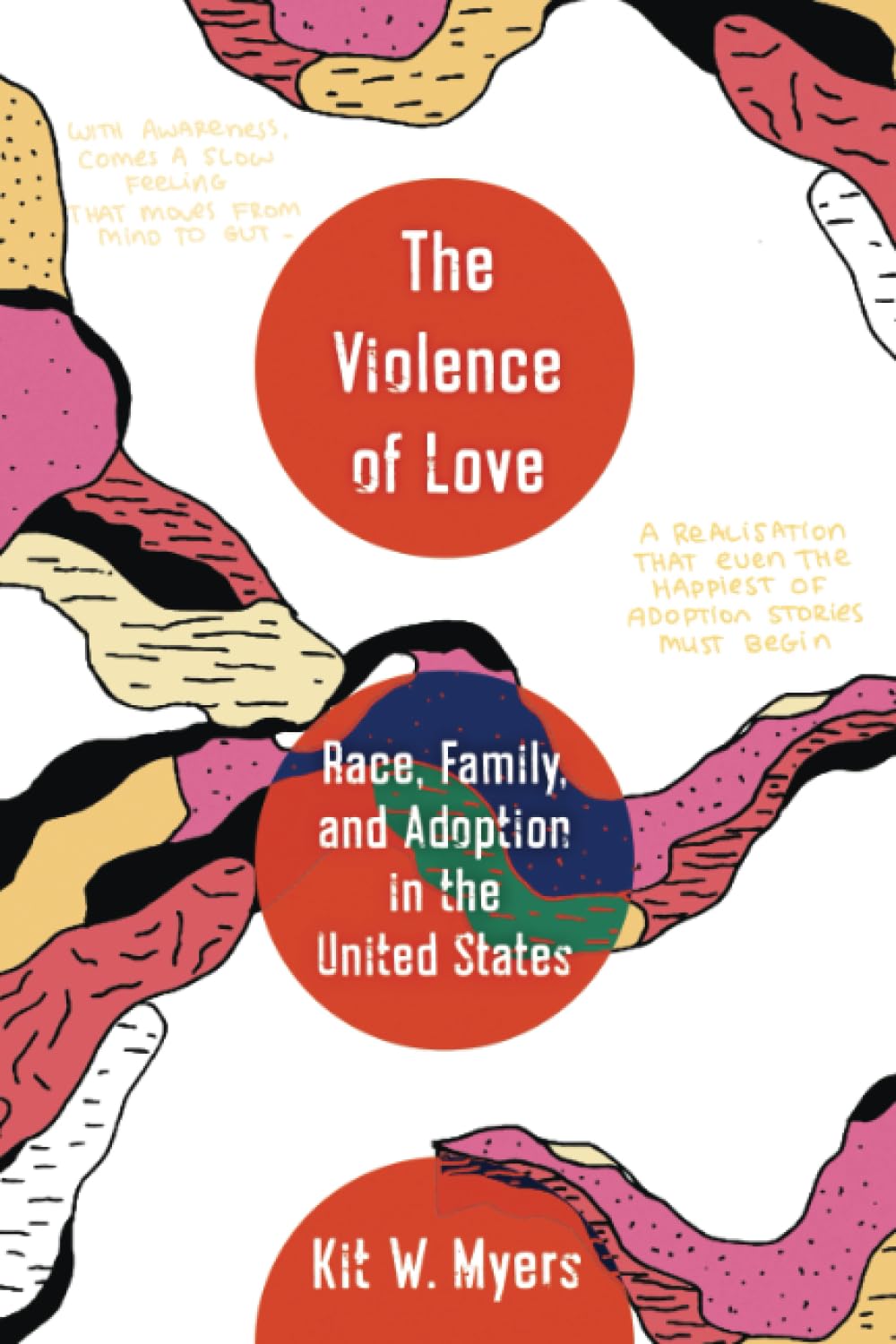The Violence of Love: Race, Family, and Adoption in the United States
- By Kit W. Myers
- University of California Press
- 284 pp.
- Reviewed by Alice Stephens
- March 6, 2025
A probing look at what America gets wrong about transracial adoption.

While there are decades’ worth of academic works examining the peculiar institution of adoption, in recent years, it is adopted people themselves who’ve been at the forefront of critical adoption studies. An essential addition to the scholarship is transnational adoptee Kit W. Myers’ The Violence of Love, an interdisciplinary inquiry into the political and cultural influences on the American phenomenon of adoption between races and nations.
A professor of critical race and ethnic studies, Myers asserts that even though transracial and transnational adoption (TRNA) is often rooted in the desire to create a loving family, removing a child from their relatives, culture, and country is inherently an act of violence built on structural and institutional inequalities. He writes:
“Love is constantly operating within and shaping TRNAs, but also relational formulations of race and the violence of love are integral to how adoption, family, and nation are socially constructed. In this way adoption is not just an event, legal procedure, or descriptor but more broadly an institution, an industry, and a discursive formation.”
Myers traces TRNA’s emergence to the aftermath of World War II, when the Displaced Persons Act of 1948 allowed adoptions from countries such as Greece, Germany, and Japan. Following the Korean War, media campaigns in the U.S. encouraging families to take in war orphans were amplified by white Christian evangelicals preaching the gospel of adoption, spurring widespread demand. By the time of the Vietnam War, white America was clamoring to take in pitiable urchins.
While the public has been conditioned to see these adoptions through the lens of pure love, Myers asserts that the genesis of TRNA was political, rising from a trend toward racial liberalism, which “focused on racial progress and inclusion, while ignoring ideological, institutional, and ultimately structural forms of racism.” Individual stories of rescue and affection serve as cover for societal acquiescence to entrenched policies that marginalize and punish communities of color. By making assertions of “color-blindness,” adoptive families and other promoters of TRNA pretend race doesn’t matter in America, leaving their adopted children vulnerable.
As TRNA changed the public’s view of adoption from a shameful secret of infertility and artificial family-building to a humanitarian act, there was a conscious push to modify the language around adoption (e.g., replacing “real parent” with “birth parent,” and “child taken away” with “court termination”). By softening the vocabulary, the uglier realities of adoption could be glossed over, “solidify[ing] the placement of adoptive parents over and against birth parents.”
In the face of questions about the advisability of transracial adoption — the National Association of Black Social Workers issued a position paper against it in 1972 — scientific studies were initiated to examine its effects on adoptees and their families. Myers asserts that these studies used carefully selected subjects, favored adoptive parents’ testimony over adoptees’, had high attrition rates, and minimized the racial component. Their conclusions were that TRNA was almost always in the best interest of the child, who would otherwise have to endure a bleak future in a backward place.
As adoption became more widespread, American politicians began to pay attention. Ronald Reagan enacted National Adoption Week in 1984. In the 1990s, a flurry of adoption-related legislation was passed, and congressional hearings were held on removing the barriers to adoption. Parsing the testimony, Myers reveals the profoundly ingrained biases of the politicians, some of whom were adoptive parents themselves. Not only did they make assumptions about the character and values of birth families and countries of origin, they lauded America as a color-blind land of opportunity for all.
The hearings centered white adoptive parents, demonstrating “adoption legislation has been driven by adoptive parent lawmakers, reinscribing the cycle in which adoptive parents have disproportionate power in producing policy and knowledge even though they only comprise one-third of the major parties involved in adoption.” (Indeed, three of the nine current U.S. Supreme Court justices are adoptive parents.) The hearings gave scant attention to an American child-welfare system that disproportionately polices and punishes parents of color to produce adoptable “state orphans,” thereby ignoring structural deficiencies that affect millions.
The dream of a loving forever family is not guaranteed for adoptees, the author points out, citing reports of abuse, racism, and rehoming (in which adoptees are moved from one family to another outside of any oversight). Additionally, the U.S. failed transnational adoptees by not making citizenship automatic until 2001, leaving tens of thousands of them eligible for deportation.
Asserting that “Native American tribes are separate and self-determined political entities,” Myers scrutinizes their experience with adoption to further illustrate the violence of TRNA. He reviews the long history of family separation in the name of assimilation via boarding schools, government-sponsored adoption programs, and the zealous termination of parental rights. In 1978, the Indian Child Welfare Act (ICWA) was passed in response to these abuses. Regarded as “the gold standard of child welfare,” ICWA allows tribes to keep children within their extended families, communities, and culture.
According to the author, “ICWA has been challenged nearly as many times as the Affordable Care Act” with arguments that it “exceeded federal authority, infringed upon state sovereignty, and discriminated on the base of race.” The Supreme Court upheld ICWA in 2023, but Myers warns that some of the justices seemed to invite stronger challenges in order to strike down the very notion of tribes’ sovereignty as congressional overreach.
Myers concludes with a plea “to reimagine love for alternative purposes,” urging readers to expand their definition of “family” to encompass kinship relationships. Additionally, he recommends listening to adoptees; embracing open adoptions, which give equal power to all the parents involved; prioritizing reproductive justice; and abolishing the current child-welfare system.
The Violence of Love is a dense, exhaustively researched academic work. Citing sources from Michel Foucault to Dorothy Roberts, Myers writes in a way that makes the theoretical frameworks and concepts he references accessible to interested readers. This vital addition to the expanding literature of adoptee-authored critical adoption studies is a unique resource for understanding the past and present ramifications of TRNA, one that points the way to a better future for children and families.
Author of the novel Famous Adopted People, Alice Stephens was adopted from South Korea by a family who made sure to attain her American citizenship.

